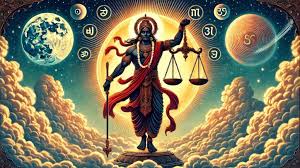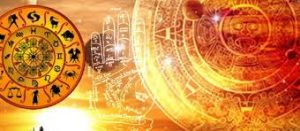In Indian Vedic astrology, karma is categorized into distinct types that describe different aspects of the law of cause and effect. These categories help interpret how past actions influence the present and future within the astrological framework. Let’s delve into the details:
- Categories of Karma in Vedic Astrology
- Astrological Applications:
- The connection between the categories of karma (Sanchita, Prarabdha, Kriyamana, and Agami) and planetary influences or nakshatras in Vedic astrology.
- 1. Sanchita Karma and its Astrological Connection:
- 2. Prarabdha Karma (Dridha / Dridha-Adridha / Adridha):
- 3. Kriyamana Karma and Astrological Indicators:
- 4. Agami Karma and its Future Implications:
- Summary:
Categories of Karma in Vedic Astrology
1. Sanchita Karma:
This is the accumulated karma from all past lifetimes, stored as a “karmic reservoir.” It contains both good and bad actions, but not all of it manifests in the current life—it forms the potential for future experiences.
- Example: If someone has a natural talent for art or music, this could be attributed to positive Sanchita Karma—actions from previous lifetimes contributed to this skill.
2. Prarabdha Karma:
This is the portion of Sanchita Karma that is active in the current lifetime. It is divided into three subcategories based on the level of flexibility or changeability:
- Dridha (Fixed Karma):
- These events are firmly predestined and cannot be changed through actions or remedies. They manifest as unavoidable life experiences.
- Example: Being born into a specific family or facing a particular health condition despite efforts to avoid it.
- Dridha-Adridha (Mixed Karma):
- These events are partially fixed but can be influenced through sincere effort, remedies, or spiritual practice.
- Example: Struggling in relationships might be mixed karma—while challenges arise due to past actions, improvements can occur through conscious behavior and dedication to growth.
- Adridha (Changeable Karma):
- This form of karma is flexible and can be entirely modified through present actions.
- Example: Career choices or education paths can be altered with determined effort, reshaping future outcomes.
3. Kriyamana Karma:
This is the karma being created in the present moment. It’s the most dynamic and reflects the idea of free will and the ability to shape one’s future.
- Example: Helping someone in need creates positive Kriyamana Karma, laying the groundwork for favorable circumstances in the future.
4. Agami Karma:
This is the karma generated by actions in the current life that will bear fruit in future lifetimes. It underscores the idea of continuity and responsibility for present actions.
- Example: If a person consistently engages in unethical business practices, the consequences might not appear immediately but could result in struggles in their next incarnation.
Astrological Applications:
In Vedic astrology, planetary positions and houses help interpret these karmic categories:
- Saturn (Shani) signifies challenges and karmic lessons, often linked to Prarabdha Karma.
- Rahu and Ketu, the nodes of the Moon, are closely tied to karmic debts and spiritual liberation, highlighting both Sanchita and Agami Karma.
The connection between the categories of karma (Sanchita, Prarabdha, Kriyamana, and Agami) and planetary influences or nakshatras in Vedic astrology.
the connection between the categories of karma (Sanchita, Prarabdha, Kriyamana, and Agami) and planetary influences or nakshatras in Vedic astrology. These celestial bodies and constellations act as symbolic representations of our karmic journey.
1. Sanchita Karma and its Astrological Connection:
- Planetary Influence:
- Rahu and Ketu: These shadow planets signify the karmic past. Rahu represents unfulfilled desires and worldly attachments carried forward, while Ketu symbolizes the lessons learned and detachment from materialistic pursuits.
- Saturn (Shani): Governs the weight of accumulated karma and often reveals areas where one must take responsibility.
- Nakshatras: Specific nakshatras like Ashwini, Moola, or Magha are believed to relate strongly to the soul’s karmic roots. For instance, Magha can symbolize ancestral karma inherited by the individual.
- Example: If a person has Ketu placed in the 12th house (house of liberation), it could suggest that their soul has completed certain karmic cycles and is ready to focus on spiritual evolution.
2. Prarabdha Karma (Dridha / Dridha-Adridha / Adridha):
- Planetary Influence:
- Saturn: Reflects fixed karma (Dridha) that must be experienced. A debilitated Saturn might indicate unavoidable hardships.
- Jupiter: Governs mixed karma (Dridha-Adridha), where wisdom, grace, and remedies can alter outcomes.
- Nakshatras: Nakshatras like Anuradha or Uttara Ashadha are connected to perseverance and duty, often linked to karmic repayment through dedication.
- Example:
- A debilitated Saturn in the 8th house could represent unavoidable karmic difficulties in areas like transformation or inheritance (Dridha).
- However, a strong Jupiter aspecting Saturn might give opportunities for resolution through good deeds or spiritual practices (Dridha-Adridha).
3. Kriyamana Karma and Astrological Indicators:
- Planetary Influence:
- Mercury: Governs present decisions, intellect, and communication. A strong Mercury shows the potential to consciously create good karma.
- Sun: Represents self-awareness and efforts to align with dharma (righteousness) in the present.
- Nakshatras: Nakshatras like Swati (symbolizing independence and adaptability) or Chitra (connected to creativity and present actions) highlight the importance of Kriyamana Karma.
- Example: If Mercury is exalted in the 5th house (house of creativity and intellect), it suggests that the individual has the capacity to consciously create good karmic consequences through present actions, such as teaching or helping others.
4. Agami Karma and its Future Implications:
- Planetary Influence:
- Venus: Often associated with the accumulation of karma that affects relationships and pleasure in future lives.
- Moon: Governs emotions and subconscious actions that influence future karmic outcomes.
- Nakshatras: Nakshatras like Shravana (symbolizing listening and wisdom) or Pushya (nurturing and auspiciousness) emphasize karma that seeds future lifetimes.
- Example: If Venus is in the 7th house and afflicted by malefics, it could suggest actions in this lifetime that may result in challenging relationship dynamics in a future incarnation unless corrected.
Summary:
Vedic astrology serves as a tool to decode one’s karmic blueprint. By analyzing planetary placements and nakshatras, we can better understand the nature of karma influencing our current and future experiences. Remedies, spiritual practices, and conscious living can significantly alter Adridha or Kriyamana Karma, offering a path for self-improvement and liberation.




